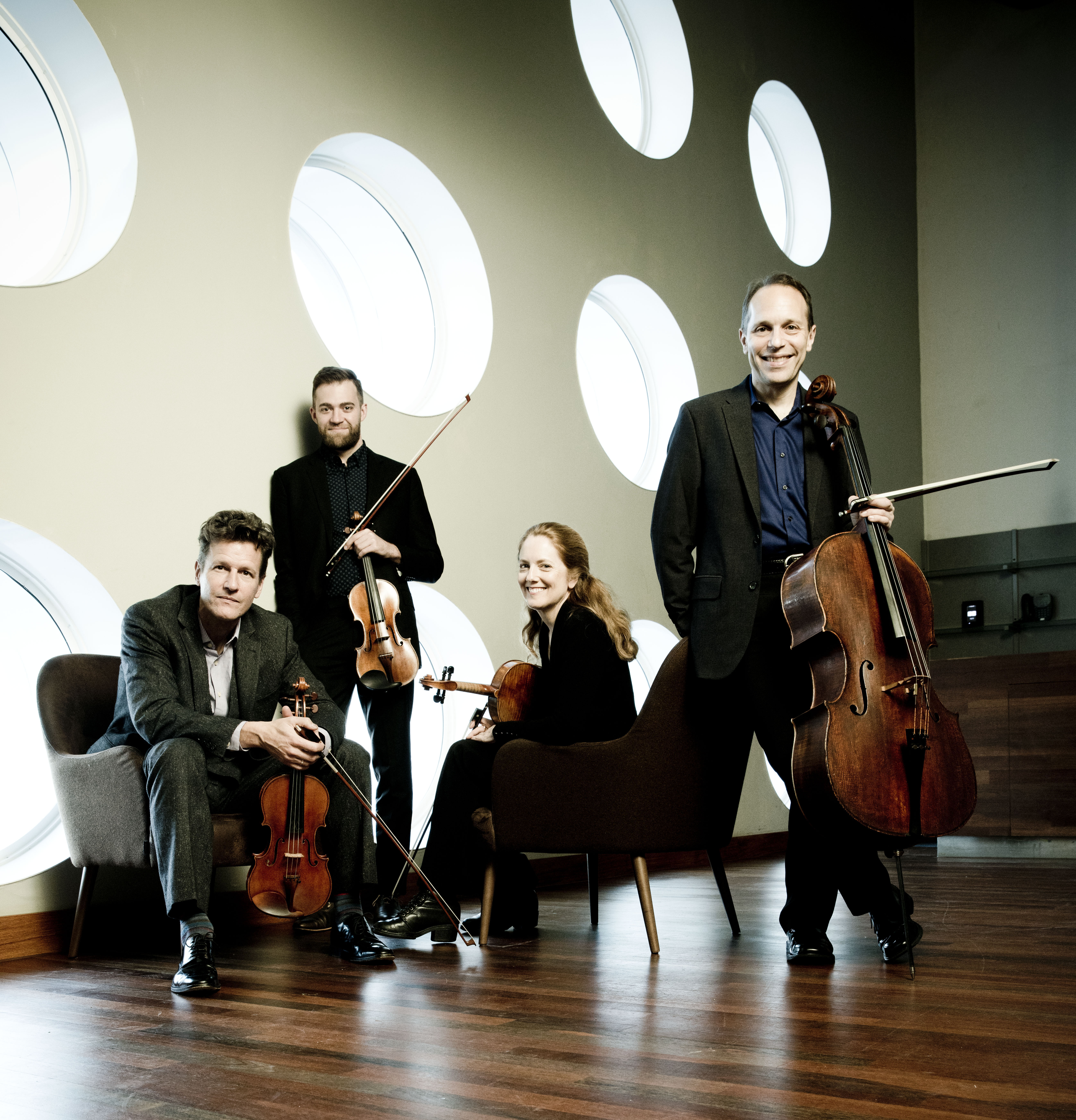Hundreds of people flooded into Bing Concert Hall on June 26 for a captivating hour of classical music at the St. Lawrence String Quartet’s second Midday Masters concert this summer. Featuring spectacular performances of Joseph Haydn’s Piano Trio in A Major, Op. 41 and Ernő Dohnányi’s Piano Quintet No. 1 in c minor, Op. 1, the concert embraced flair without being eccentric, fun without being over-the-top and emotion without being heavy.
The St. Lawrence String Quartet, composed of violinist Geoff Nuttall, second violinist Owen Dalby, violist Lesley Robertson and cellist Christopher Costanza, is currently the ensemble-in-residence at Stanford. Its members teach privately, direct the chamber music program in the Department of Music and instruct a special chamber music seminar that blends performance majors with aspiring adult musicians, many of whom work in professions unrelated to music.
“Music is this common thread [among us],” Nuttall told The Daily. “It’s a joy to be at Stanford because they’re so supportive of the arts.”
Nuttall, cellist Alasdair Tait and pianist Pedja Mužijević presented a very charming rendition of the Haydn, performing it with such character that I couldn’t help but smile. From the fun, lighthearted first movement to the sweet second movement (in which the piano carried through some beautiful melodies) to the exciting finale, I can truly say I was left breathless.
But there was more to come. I had high expectations for the Dohnányi quintet, performed by the St. Lawrence String Quartet and pianist Stephen Prutsman. Dohnányi is a lesser known name among the major twentieth-century Hungarian composers, but he possesses achievements and an artistic maturity no lesser than those of Janáček, Kodály, and Bartók. His quintet, which Nuttall called “totally over the top,” allowed the ensemble to showcase his talents.
“It’s like Brahms and Wagner: incredibly expressive,” Nuttall said. “One of our favorite quintets, a total different sound — world — than the Haydn trio.”
This quintet calls for drama and the SLSQ, together with Prutsman, certainly did not disappoint, especially in the finale with their spellbinding exuberance and exhilarating finish. Some notable moments were a lovely viola solo by Robertson at the beginning of the third movement and such an electrifying finish to the first movement that many audience members couldn’t help but burst into applause before remembering that the piece wasn’t over yet. Throughout the entire performance, not once did the musicians stray on a chance for stunning dynamic contrast, and the sense of effortless unity and communication as an ensemble was very compelling.
“With [the Dohnanyi quintet], melodically and harmonically, it’s really straightforward. Rhythmic gestures, like lots of triplets, lots of fast-moving notes. They’re energizing,” said Costanza. “We want to read that, understand it, try to identify with it. Then, the idea is to identify with it so strongly that we can, without hesitation, communicate it with the audience.”
One aspect of the Dohnanyi performance that really captivated me was how much the St. Lawrence String Quartet and Prutsman loved to physically move in connection with the music. Whether whimsical, robust, spirited, or tender, the effect of each musical statement was enhanced by the body language of the musicians, which seemed part of the performance itself, from facial expressions to head movements.
“When we move with the musical phrase or when we cue each other with gestures, we always want it to connect to the music itself,” said Costanza. “I feel there’s an inextricable link between physical gesture and musical expression, and if we hold ourselves back and don’t allow ourselves to be physical, then perhaps we’re not allowing the expression to come through.”
Though the St. Lawrence String Quartet does play more formal shows, I appreciated the unconventional aspects of today’s show. The performers of the Dohnányi quintet walked on stage dressed in very unique ensembles, with violist Lesley Robertson decked out in a sparkly sequin top and second violinist Owen Dalby sporting a purple dress shirt. Furthermore, the concert series was held at noon, when many audience members were on their lunch break, and the atmosphere seemed generally very relaxed. The relatively easygoing style of this event was a breath of fresh air in light of the many long symphonies and recitals I’ve sat through, which Muzijevic said was by design.
“First and foremost, I hope the people had a good time,” Muzijevic said. “We don’t cure cancer, unfortunately. We play music, we share something with love, and I’d like people to leave and want to go to another concert. That’s really my only desire: that they go on and say, ‘Wow, that was fun, I want to go to another one!’”
As demonstrated in this particular concert, I certainly think the St. Lawrence String Quartet is taking the right steps to engage modern audiences in new ways, while still staying true to their musical legacies of performing great works by history’s finest composers. After coming to Midday Masters, I have hope for the future of classical music: a genre that is far from dead, but rather being reinvented to inspire and excite new generations.
Contact Esther Sun at sune2696 ‘at’ lgsstudent.org.
